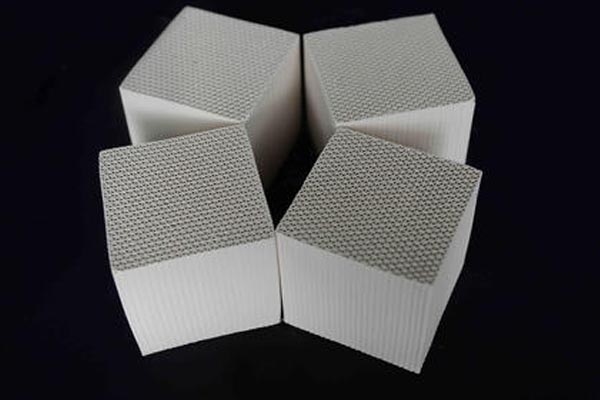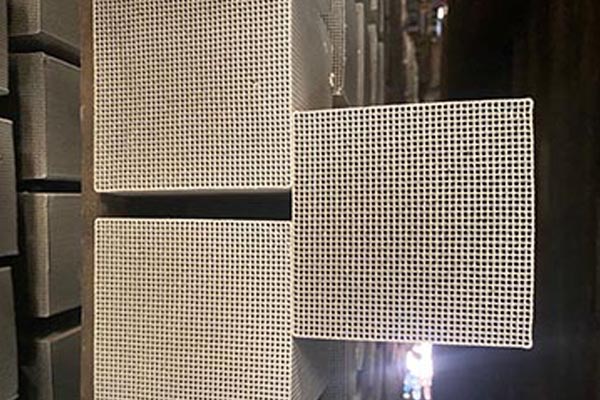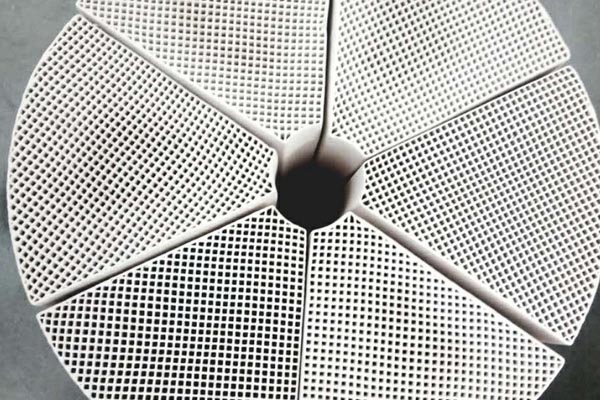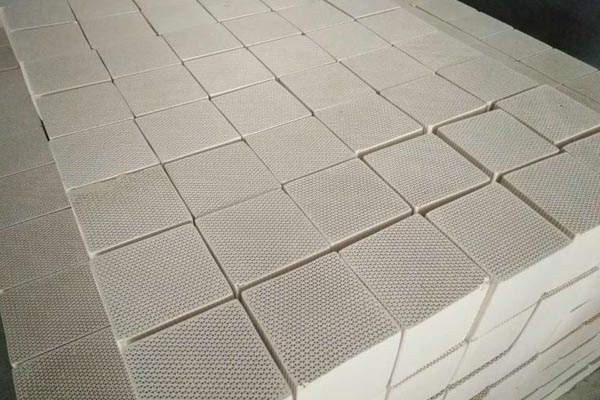
Honeycomb zeolite molecular sieve is an efficient molecular sieve carrier with good adsorption performance, no secondary pollution and high temperature regeneration. It is widely used in the fields of adsorption, separation, catalysis and environment, Zeolite honeycomb molecular sieve purchase It is more suitable for the treatment of organic waste gas with large air volume and low concentration. It is widely used in the production of basic organic chemical industry and petrochemical industry, as well as in the treatment of harmful gases, SO2 NOx、CO、CO2,NH3,CCl4、 Purification of water vapor and gaseous hydrocarbon waste gas. Strong adsorption selectivity: molecular sieve materials with different properties and pore sizes are configured for the product according to the different components of organic waste gas, so as to achieve targeted and selective treatment of organic waste gas, meet the design requirements and meet the emission standards. 2. Strong adsorption capacity: even if the gas composition concentration is very low at the mg level, it still has the adsorption capacity. The efficiency is 50% higher than that of similar activated carbon. 3. Wide adaptability of adsorption temperature: at a higher temperature, it still has a large adsorption capacity, while other adsorbents are greatly affected by temperature, so under the same temperature, the adsorption capacity of molecular sieve is large. 4. Good regeneration temperature resistance: the concentration ratio of pollutants after adsorption and concentration by molecular sieve can reach 15 to 20 times, and the concentrated waste gas can be condensed and recovered or burned at high temperature as required 5. High strength: Zeolite honeycomb molecular sieve production Products coming to the company use special framework materials to make the positive pressure strength of honeycomb zeolite reach more than 3Mpa, which can reduce damage during transportation and installation.

Zeolite honeycomb molecular sieve production Microporous molecular sieves with molecular pore size below 2 nm and mesoporous molecular sieves with molecular pore size between 2-50 nm (50 nm The above are macroporous molecular sieves), mesoporous molecular sieves have high specific surface area, regular and orderly pore structure, narrow pore size distribution, continuous and adjustable pore size and other characteristics, which make it play an important role in the adsorption, separation and catalytic reaction of macromolecules that are difficult for many microporous molecular sieves to complete. Therefore, molecular sieve materials with different properties and pore sizes shall be configured according to the different components of organic waste gas during selection, so as to achieve targeted organic waste gas treatment, meet the design requirements and emission standards. The main material of honeycomb zeolite adsorbent is natural zeolite. The manufacturer of zeolite is composed of silica Inorganic microporous material composed of al_2o_3 and alkaline metal or alkaline earth metal, with inner pore volume accounting for 40-50% of the total volume and specific surface area of 100-500 m2/g, is characterized by high temperature resistance, non flammability, good thermal stability and hydrothermal stability. It is an efficient molecular sieve carrier with good adsorption performance, no secondary pollution, and can be regenerated at high temperature. Compared with honeycomb activated carbon, its performance is about 25% of its efficiency, However, it is widely used in the fields of adsorption, separation, catalysis and environment due to its high temperature resistance and difficult ignition, Zeolite honeycomb molecular sieve purchase It is more suitable for the treatment of organic waste gas with large air volume and low concentration.

With the continuous deepening of research, honeycomb zeolite molecular sieve has gradually moved from laboratory to industrial practical application. Due to its powerful performance, it can be integrated with the reactor, Ji'an Zeolite honeycomb molecular sieve In membrane catalytic reaction, the reaction is coupled with separation. At present, the application fields of zeolite membrane are pervaporation, gas separation and membrane reactor. It is the needs of human practical activities and the development of application fields that constantly promote the development of zeolite molecular sieves. From natural zeolite to synthetic zeolite, from low silica zeolite to high silica zeolite; From silicoaluminium molecular sieve to aluminophosphate molecular sieve; From super micropore to mesoporous material; Zeolite honeycomb molecular sieve purchase The development from inorganic porous frameworks to MOFs, as well as the recent emergence of macroporous materials, has effectively improved the yield, reduced the synthesis cost and environmental pollution.

Zeolite honeycomb molecular sieve purchase Technical performance and characteristics: simple structure, convenient maintenance and long service life; High absorption and desorption efficiency, so that VOCss waste gas with high air volume and low concentration can be converted into low air volume and high concentration waste gas, reducing the cost of back-end final treatment equipment; The pressure drop generated by the adsorption of VOCs by the zeolite runner is extremely low, which can greatly reduce the power consumption; The overall system adopts pre assembly and modular design, which has a small space requirement and provides a continuous and unmanned control mode; The waste gas concentrated by the runner can meet the national emission standards; The adsorbent uses non combustible hydrophobic zeolite, which is safer to use; The disadvantage is that the one-time investment is high. The zeolite runner is essentially a concentrator, Zeolite honeycomb molecular sieve production The waste gas containing organic solvent after runner treatment is divided into two parts: clean air that can be discharged directly and regeneration air containing high concentration organic solvent. The clean air that can be directly discharged can enter the spray paint air conditioning ventilation system for recycling; The concentration of high concentration VOCs is about 10 times that of the VOCs before entering the system. The concentrated gas is then incinerated at high temperature through the TNV recovery thermal incineration system (or other equipment). The heat generated by incineration is respectively used to heat the drying room and the zeolite wheel desorption. The heat is fully used to achieve the effect of energy conservation and emission reduction.

Because there are uniform small internal pores in the molecular sieve structure, Zeolite honeycomb molecular sieve Ji'an When the molecular linear degree of reactants and products is close to the pore size of the crystal, the selectivity of catalytic reaction often depends on the corresponding size of the molecule and pore size. This selectivity is called shape selective catalysis. There are two mechanisms leading to shape selectivity. One is caused by the difference of diffusion coefficient of molecules participating in the reaction in the pore cavity, which is called mass transfer selectivity; The other is caused by the space limitation of the transition state of the catalytic reaction, which is called transition state selectivity. Molecular sieve has clear pore cavity distribution, extremely high internal surface area (600m2/s), good thermal stability (1000 ℃), and adjustable acid site center. The acidity of molecular sieve mainly comes from three coordinated aluminum atoms and aluminum ions (AlO)+on the framework and in the pores. The OH based acid sensitive site center on the molecular sieve HY obtained by ion exchange, and the aluminum ion outside the framework will strengthen the acid site, forming the L acid site center. Polyvalent cations such as Ca2+, Mg2+and La3+can show the acid site center after exchange. The reduction of transition metal ions such as Cu2+and Ag+can also form acid site centers. In general, the higher the Al/Si ratio, the higher the specific activity of OH group. The modification of zeolite acidity can introduce protons through direct exchange of dilute hydrochloric acid. Zeolite honeycomb molecular sieve purchase This method often leads to dealumination of molecular sieve framework. So NaY will become NH4Y and then HY.

The adsorption capacity of zeolite for organic pollutants mainly depends on the polar size and molecular diameter of organic molecules. Small molecules are easier to be adsorbed than large molecules, while polar molecules are easier to be adsorbed than non-polar ones. Different substances (such as organic molecules, metal ions and water molecules) exist in water, Zeolite honeycomb molecular sieve Ji'an Their polarity and molecular size are different, and competition will occur during adsorption. The main material of honeycomb zeolite adsorbent is natural zeolite. The manufacturer of zeolite is composed of silica Inorganic microporous material composed of al_2o_3 and alkaline metal or alkaline earth metal, with inner pore volume accounting for 40-50% of the total volume and specific surface area of 100-500 m2/g, is characterized by high temperature resistance, non flammability, good thermal stability and hydrothermal stability. It is an efficient molecular sieve carrier with good adsorption performance, no secondary pollution, and can be regenerated at high temperature. Compared with honeycomb activated carbon, its performance is about 25% of its efficiency, Zeolite honeycomb molecular sieve production However, it is widely used in the fields of adsorption, separation, catalysis and environment due to its high temperature resistance and difficult ignition. It is more suitable for the treatment of organic waste gas with large air volume and low concentration.





